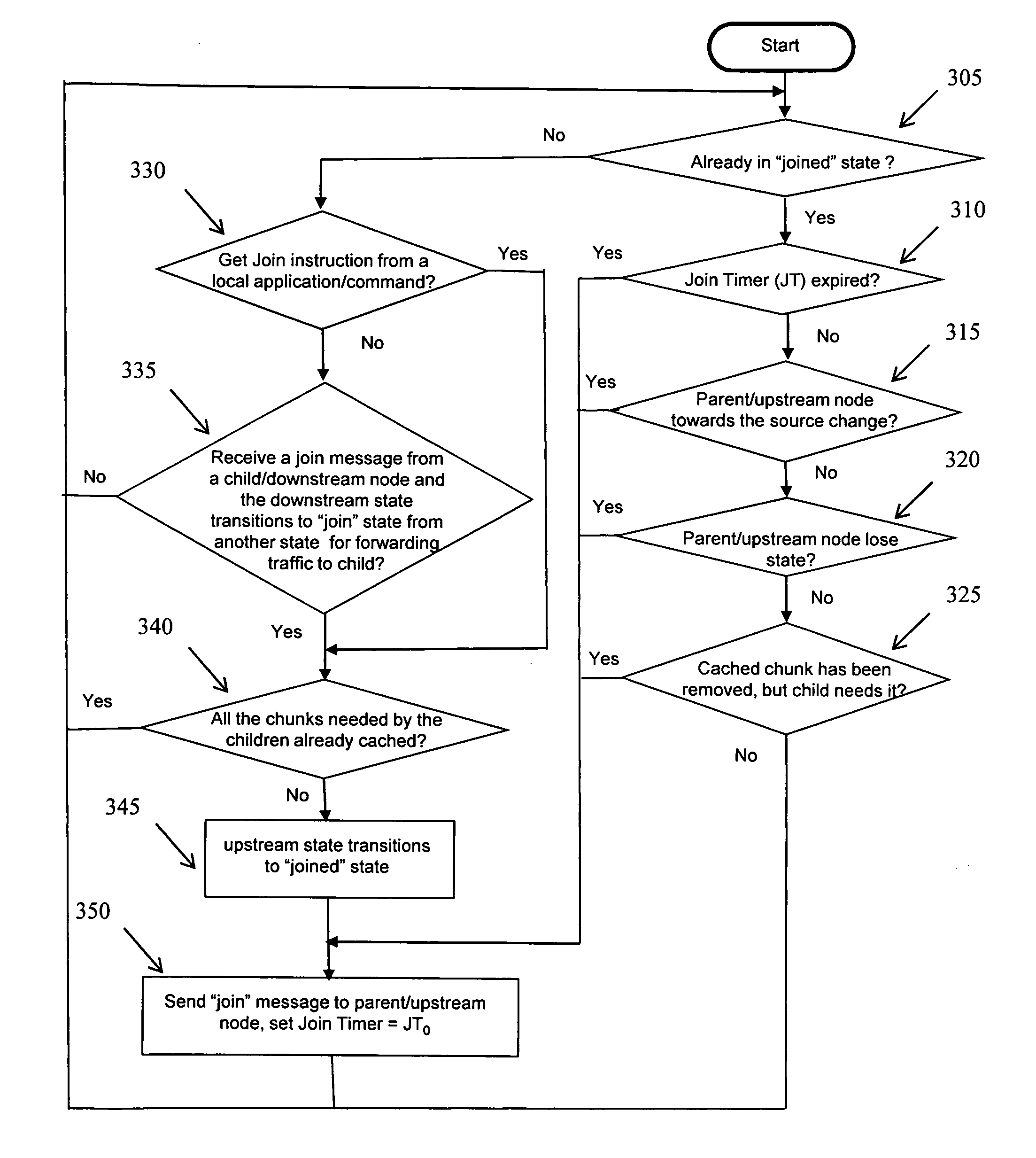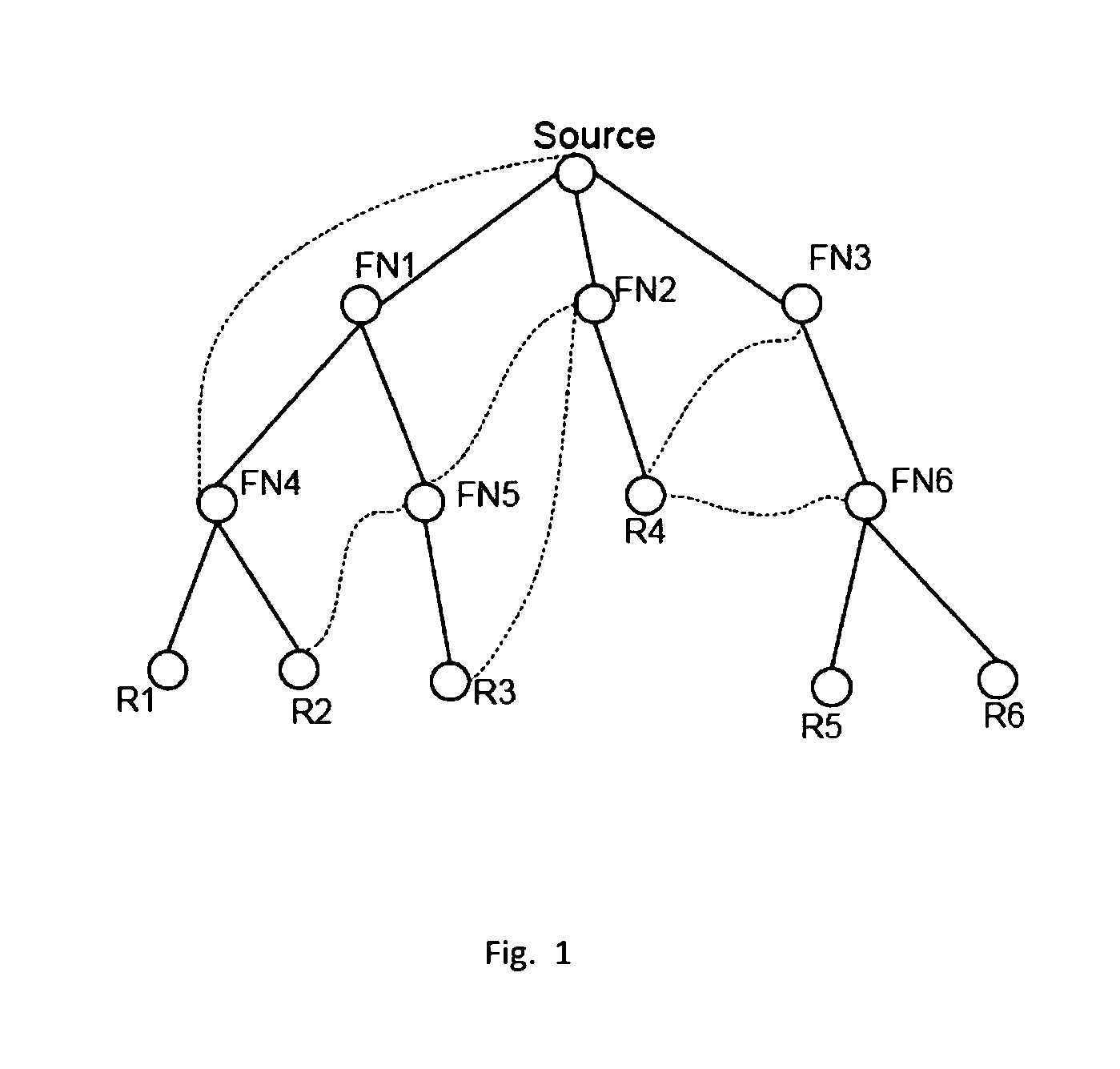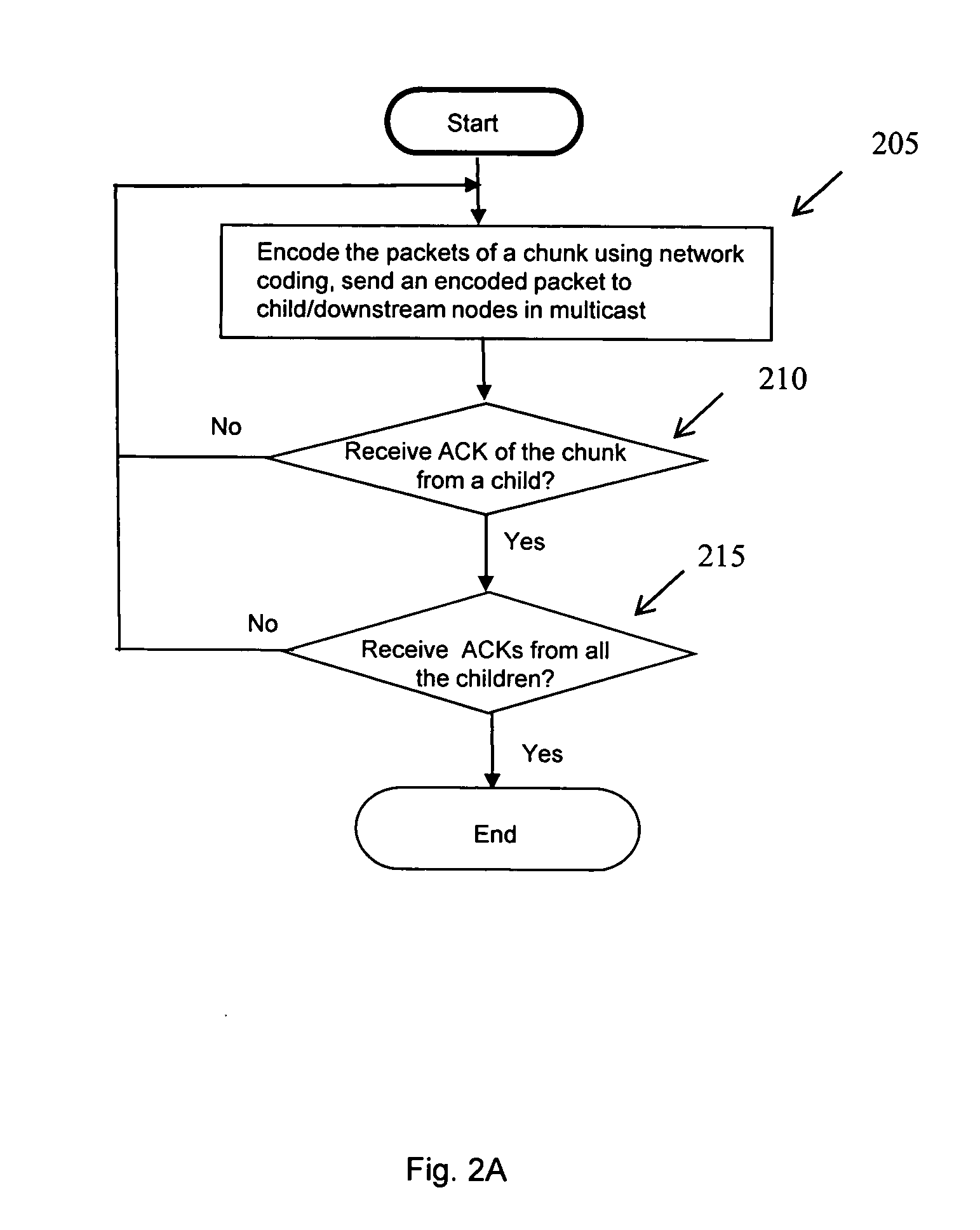Method and apparatus for hop-by-hop reliable multicast in wireless networks
a wireless network and reliable technology, applied in the field of wireless networks, can solve the problems of difficult to achieve reliable multicast in multi-hop networks, and affecting the performance of receivers with good network connectivity, so as to achieve efficient and reliable multicast transport services, efficient and reliable multicast, and increase processing power and storage capacity
- Summary
- Abstract
- Description
- Claims
- Application Information
AI Technical Summary
Benefits of technology
Problems solved by technology
Method used
Image
Examples
Embodiment Construction
[0029]HopCaster exploits the ever increasing processing power and storage capability in modern wireless routers and utilizes efficient feedback from intermediate nodes for efficient and reliable multicast transport. It has several key components, which provide reliable hop-by-hop multicast with in-network store-and-forward transport along a multicast distribution tree, intra-flow (intra-stream) network coding enabling effective opportunistic forwarding (routing, delivery), local throughput optimization to adapt to optimal physical layer transmission mode based on a varying topology of children at different stages of a multicast transmission, explicit congestion control to utilize the distributed caching capability of intermediate routers in the network for efficient reliable multicast, adaptive packet scheduling to solve “crying babies” problem in multicast.
[0030]In HopCaster, a multicast tree is built connecting the source (as the root node) to all receivers as in Pacifier. However...
PUM
 Login to View More
Login to View More Abstract
Description
Claims
Application Information
 Login to View More
Login to View More - R&D
- Intellectual Property
- Life Sciences
- Materials
- Tech Scout
- Unparalleled Data Quality
- Higher Quality Content
- 60% Fewer Hallucinations
Browse by: Latest US Patents, China's latest patents, Technical Efficacy Thesaurus, Application Domain, Technology Topic, Popular Technical Reports.
© 2025 PatSnap. All rights reserved.Legal|Privacy policy|Modern Slavery Act Transparency Statement|Sitemap|About US| Contact US: help@patsnap.com



